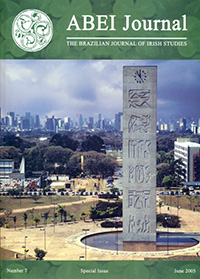Bernard Shaw’s Novels: a Critical View
DOI :
https://doi.org/10.37389/abei.v7i1.184205Mots-clés :
Bernard Shaw, Fictional writing, NovelRésumé
The aim of this article is to demonstrate the importance of Bernard Shaw’s fictional writing for his dramaturgy. Severely rejected by the critics, Shaw’s fiction rarely receives the credit it deserves. His novels are important principally because they portray the end of the Victorian century in the light of the rigid and conservative values of English society. They disobeyed the dictates of the period by criticizing society in accordance with the author’s iconoclastic style, which characterized his later theatrical work. It is important to establish a link between Shaw’s novels and his dramaturgy. In his fiction it is already possible to detect the inversion of morality in the Victorian social and cultural context, which becomes more profoundly accentuated in his plays.
Références
Laurence, Dan H. and Daniel J. Leary, eds. The Complete Prefaces. London: Allen Lane, 1993, v. I.
Shaw, Bernard. Major Barbara. London: Penguin Books, 1960.
____. Sixteen Self Sketches: New York: Dodd, Mead and Company, 1949.
____. Plays Unpleasant.London: Penguin Books, 1988.
Weintraub, Stanley. “The Embryo Playwright in Shaw’s Early Novels”. Texas Studies in Literature
and Language, v. I, (1959): 329-50.
Téléchargements
Publiée
Numéro
Rubrique
Licence
(c) Copyright Rosalie Rahal Haddad 2005

Ce travail est disponible sous licence Creative Commons Attribution - Pas d’Utilisation Commerciale 4.0 International.


